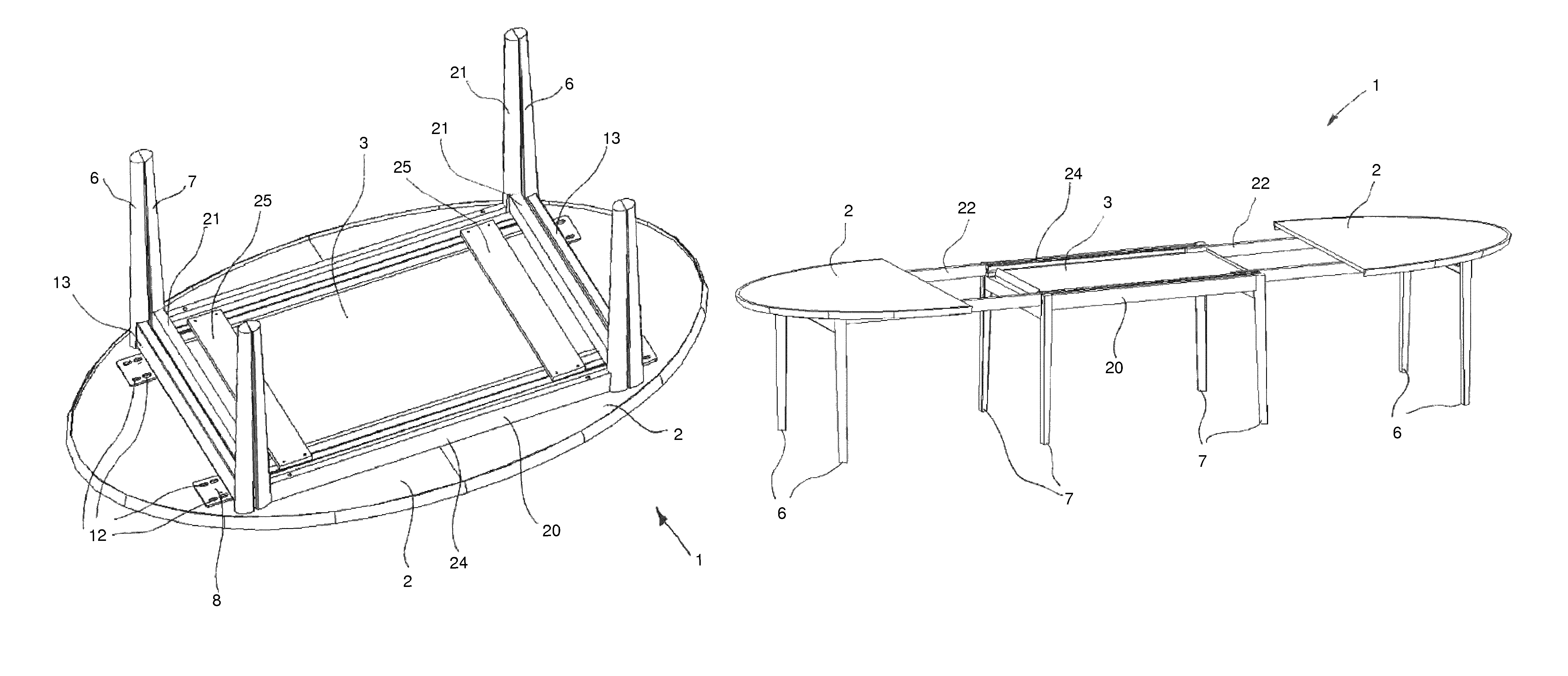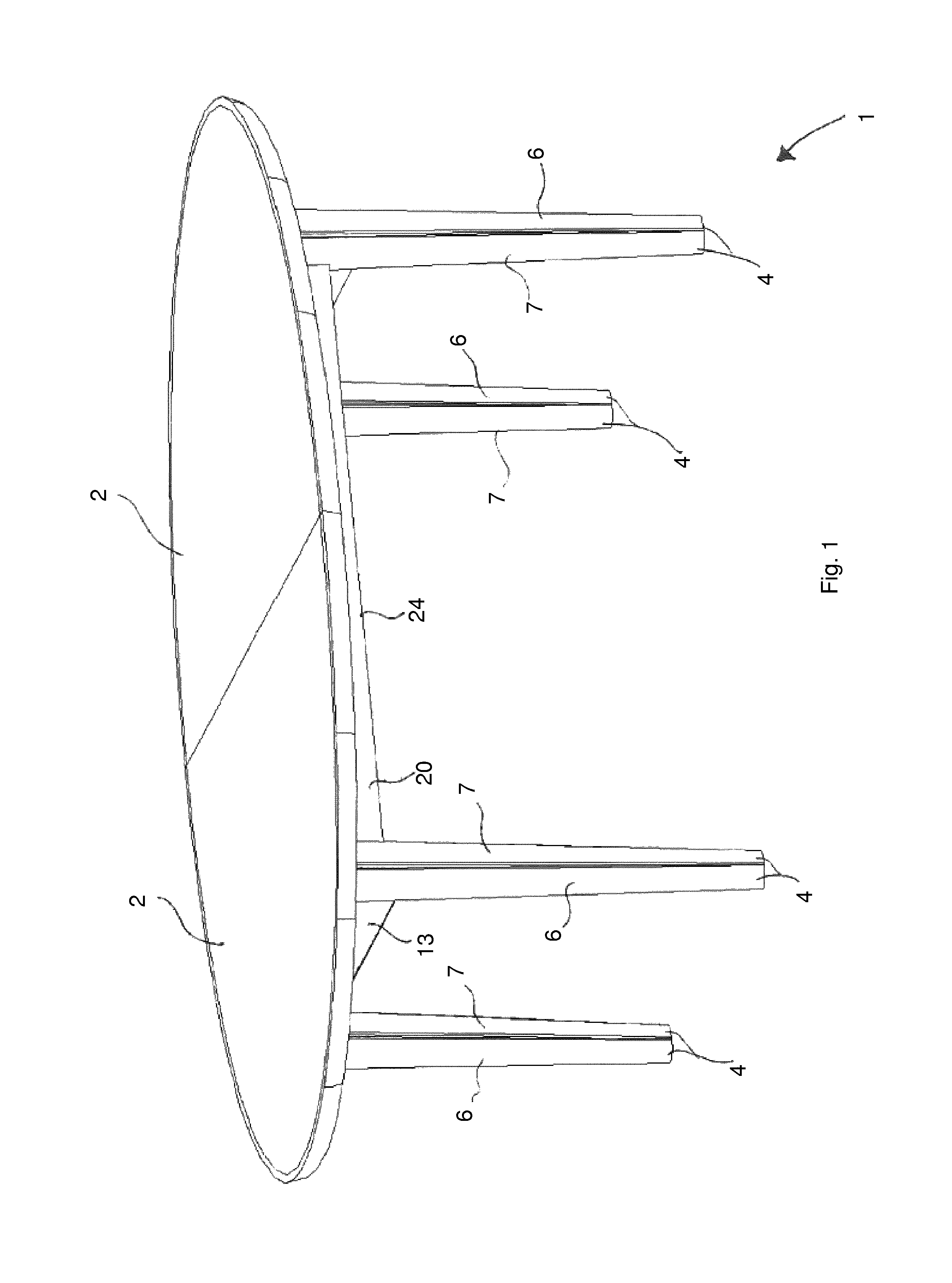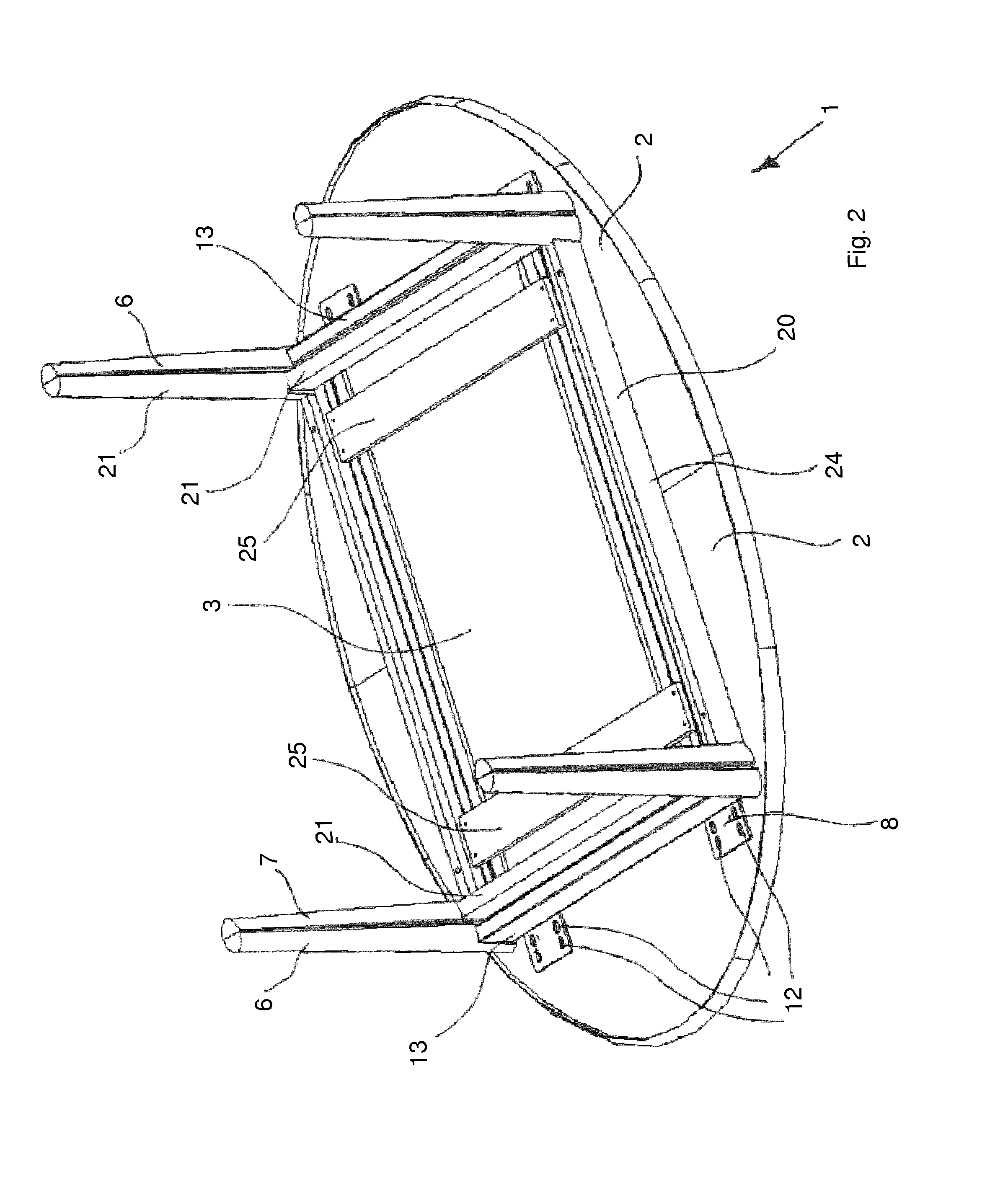Extension table with multiple legs
a technology of extension table and supporting legs, which is applied in the field of extension table with multiple legs, can solve the problems of system problems, collapse or cracking of the table or parts of the table, and the risk of the table not being stable when assembled, and achieve the effect of good stability of the supporting legs
- Summary
- Abstract
- Description
- Claims
- Application Information
AI Technical Summary
Benefits of technology
Problems solved by technology
Method used
Image
Examples
Embodiment Construction
[0045]FIG. 1 shows an extension table with multiple legs 1 according to the invention comprising two sliding table tops 2 being supported by four supporting members 4. A supporting member 4 comprises a first table leg 6 and a second table leg 7. Said two table legs are placed as close to each other as possible when the table 1 is not extended, i.e. in its first position. Typically, the supporting members 4 are oval when seen in cross-sectional view, the longitudinal axis being parallel with the direction of extension of the extension table with multiple legs. The first table leg 6 and the second table leg 7 are half of an oval when seen in a cross-sectional view, and the flat sides of the legs abut each other in the first position. Essentially, the two surfaces abutting each other completely or partially are congruent and thereby, the two surfaces cover each other. In the shown embodiment, the two surfaces are plane. However, the surfaces may bend so that one surface is convex and t...
PUM
 Login to View More
Login to View More Abstract
Description
Claims
Application Information
 Login to View More
Login to View More - R&D
- Intellectual Property
- Life Sciences
- Materials
- Tech Scout
- Unparalleled Data Quality
- Higher Quality Content
- 60% Fewer Hallucinations
Browse by: Latest US Patents, China's latest patents, Technical Efficacy Thesaurus, Application Domain, Technology Topic, Popular Technical Reports.
© 2025 PatSnap. All rights reserved.Legal|Privacy policy|Modern Slavery Act Transparency Statement|Sitemap|About US| Contact US: help@patsnap.com



